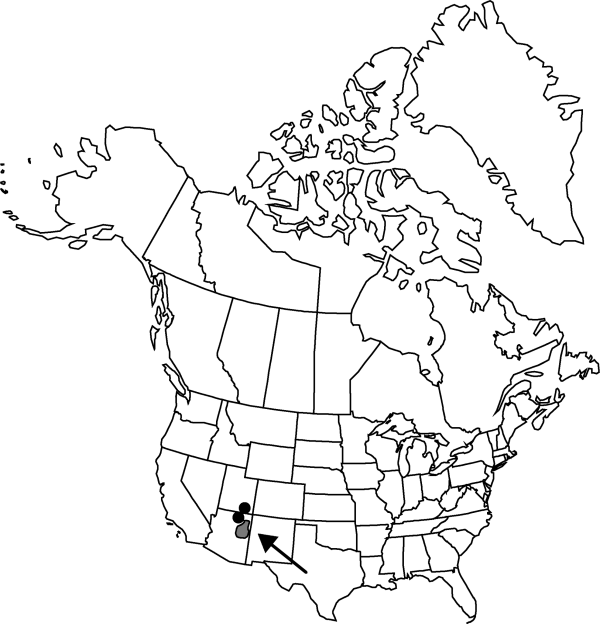Sclerocactus whipplei
Cact. 3: 213. 1922.
Stem usually unbranched, depressed-spheric, or spheric to elongate-cylindric, 3–7(–14) × 4–9(–11) cm; ribs 13–15, tubercles usually evident on ribs. Spines densely covering stem; radial spines (5–)7–12 per areole, white except for abaxial 2 that are usually purplish pink, 0.6–27 mm; central spines 4(–5) per areole, terete to angled; abaxial central spine 1 per areole, purplish pink or reddish brown, somewhat angled, hooked, 16–45(–55) × 0.5–1 mm; lateral central spines 2 per areole, directed toward stem apex, purplish pink to white, 14–45 × 0.5–1 mm; adaxial central spine white, usually flat, ribbonlike or dagger-shaped, 17–65(–70) × 1.5–2(–3) mm. Flowers funnelform to campanulate, (1.5–)2.2–3.2 × 1.5–3.5 cm; outer tepals with greenish or reddish midstripes and yellow margins, oblanceolate, to 24 × 5 mm; inner tepals yellow, oblanceolate, to 30 × 6 mm; filaments yellow; anthers yellow; ovary minutely papillate, appearing smooth. Fruits irregularly dehiscent, green to tan, often reddish at maturity, ovoid, 10–25 × 6–15 mm, dry; scales few, scarious margined, minutely toothed, membranous-fringed. Seeds black, 2 × 2 mm, shiny; testa with rounded papillae.
Phenology: Flowering late Apr–May.
Habitat: Gravelly or sandy hills, canyon rims and mesas, desert grasslands, sagebrush or saltbush flats, or pinyon-juniper woodlands
Elevation: 1500-1800 m
Distribution

Ariz., Utah.
Discussion
Sclerocactus whipplei, is one of the more distinctive species, characterized by yellow flowers and the flattened, somewhat daggerlike, adaxial central spine directed toward the stem apex. Similar species are S. sileri, of northeast Coconino County, Arizona, and the yellow-flowered populations of S. parviflorus, often referred to as subspecies terrae-canyonae (K. D. Heil) K. D. Heil & J. M. Porter. However, S. sileri lacks the daggerlike adaxial central spines, has fruits that dehisce by vertical slits and flowers that are usually a more pale yellow to nearly white, often suffused with brown. Sclerocactus parviflorus similarly lacks the daggerlike adaxial central spines and possesses larger stems and flowers.
Chloroplast DNA sequence data (J. M. Porter et al. 2000) support close relationships among Sclerocactus whipplei, S. parviflorus, and S. cloverae. Both S. whipplei and S. parviflorus possess identical DNA profiles for the gene studied.
Selected References
None.